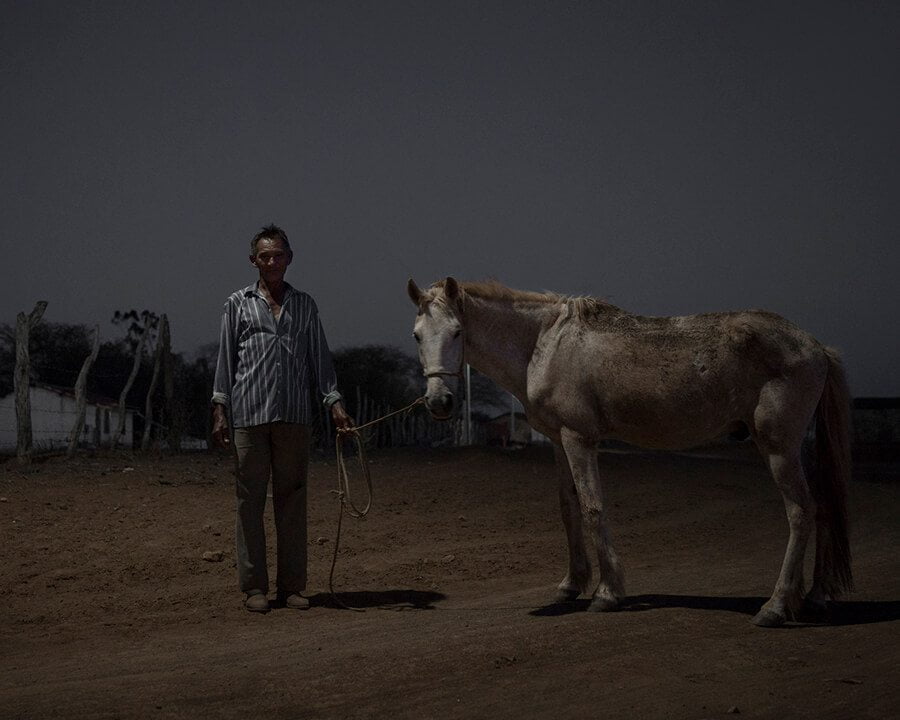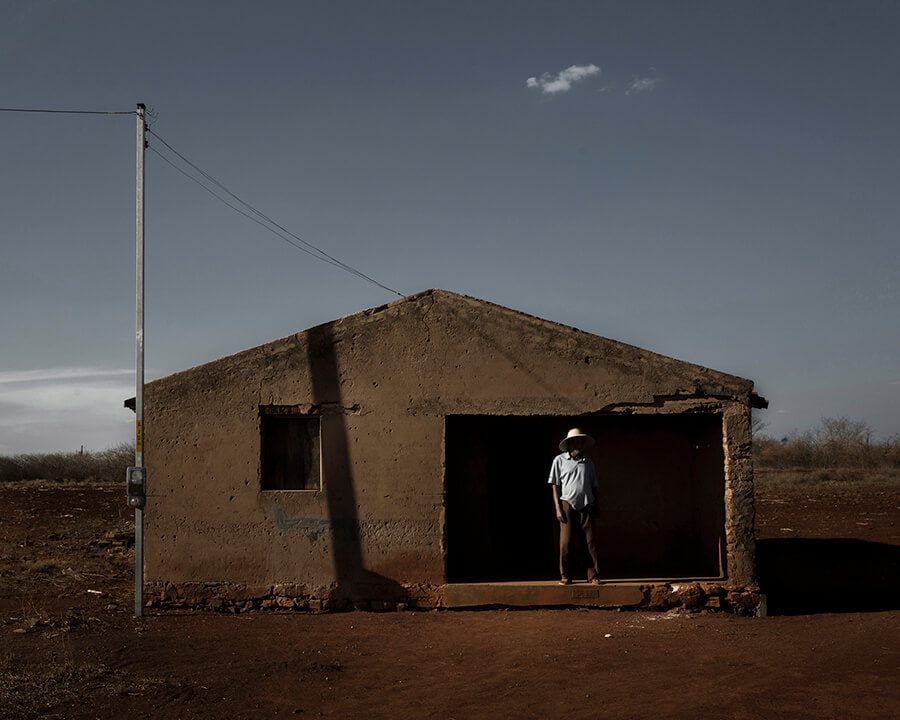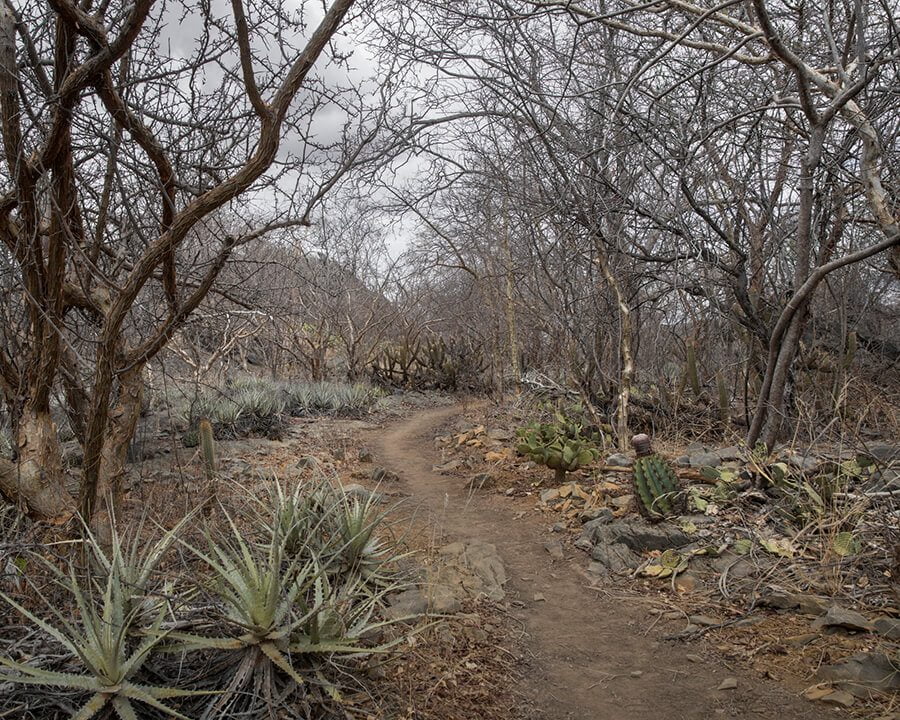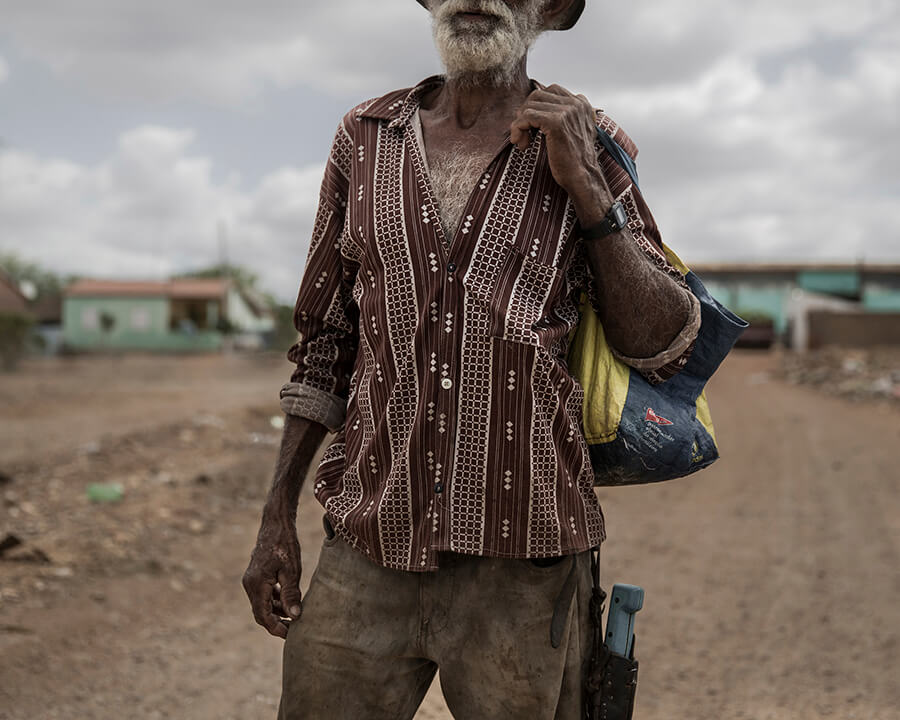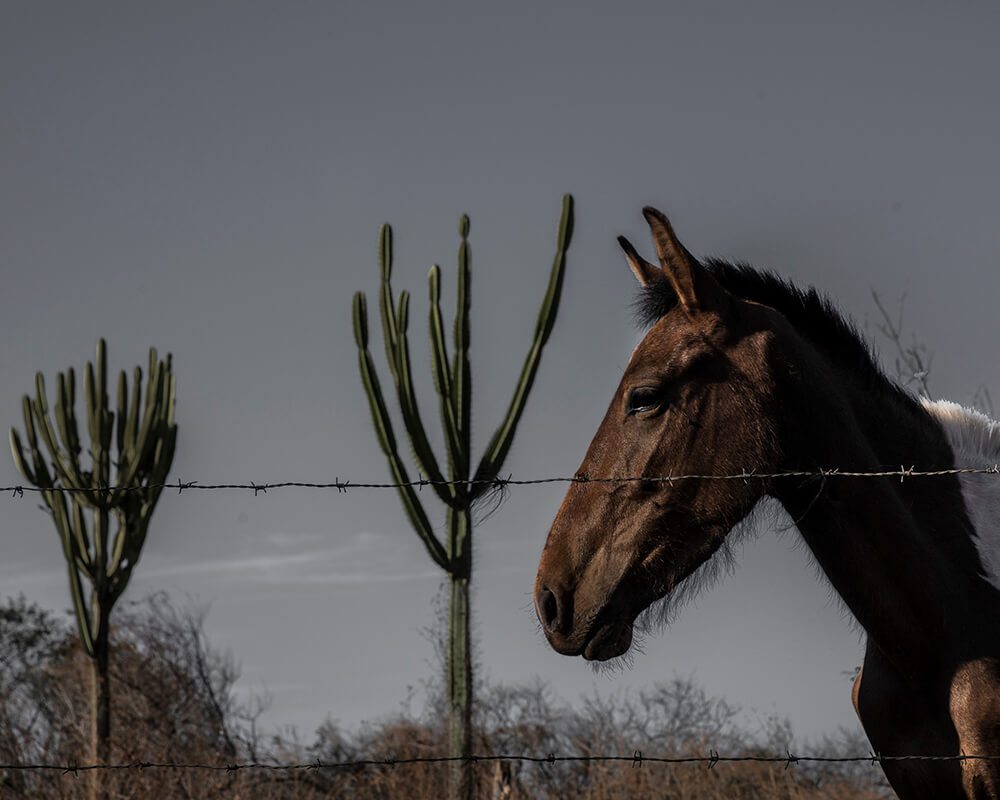INTERVIEW
Emotion beyond Truth
WITH FELIPE FITTIPALDI
An interview with Felipe Fittipaldi
“My idea was to suggest something about their universe. It was a search for the emotion, not the truth.”
Felipe Fittipaldi won our Open Call theme – judged by Katerina Stathopoulou, curator at MoMA – with a stunning composition from his series ‘Backlands Sertão’. Katerina noted the viewpoint – almost that of the deceased – and the power in withdrawing certain physical elements from the scene, and described it as a photograph that “tells multiple stories and raises multiple questions”. Fittingly, we wanted to ask Felipe more about the image and series, along with his approach to long-form documentary project-making. His responses were thoughtful and surprising, covering the passion that went into the project, how we builds a frame from the elements around him, and how his work fits into the ever-evolving world of professional photography…
Your winning image comes from the series ‘Backlands Sertão’ in which you examine the social impact of the migration of young people away from the rural areas of Brasil. You focus on those left behind – an ageing population, perhaps the last representatives of traditional culture. How did this project come about? And what personal meaning does it have for you, as a Brazilian now based in Rio de Janeiro?
I was in the region to do an article about archaeology for a magazine. The Brazilian semi-arid area has a large number of archaeological sites, and on the long road to these sites there are houses and people that appear almost like mirages amidst the hostile landscape of the caatinga (Brazilian savannah). These people intrigued me, and visiting them and listening to their stories, I noticed that most chose to remain in isolation, in their places of origin, watching their inheritors migrate to urban centres, struggling to adapt to modern life.
A year after my first contact, I returned to the region to photograph this story as a personal project. I travelled more than 5,000 km of dirt roads in search of the characters. One of my motivations to document the traditional populations that resist in the Brazilian caatinga was the admiration for a wisdom that we lack in the city. In the consumer society, we are conditioned to seek assurances, stability and status. Failure in this chase results in fear and loneliness. The “sertanejos”, as they are called, accept the cycle of life in a very natural way. Drought, loneliness and death have always been part of their universe. There is an admirable resignation in this acceptance. Spending time with them made me think about it.
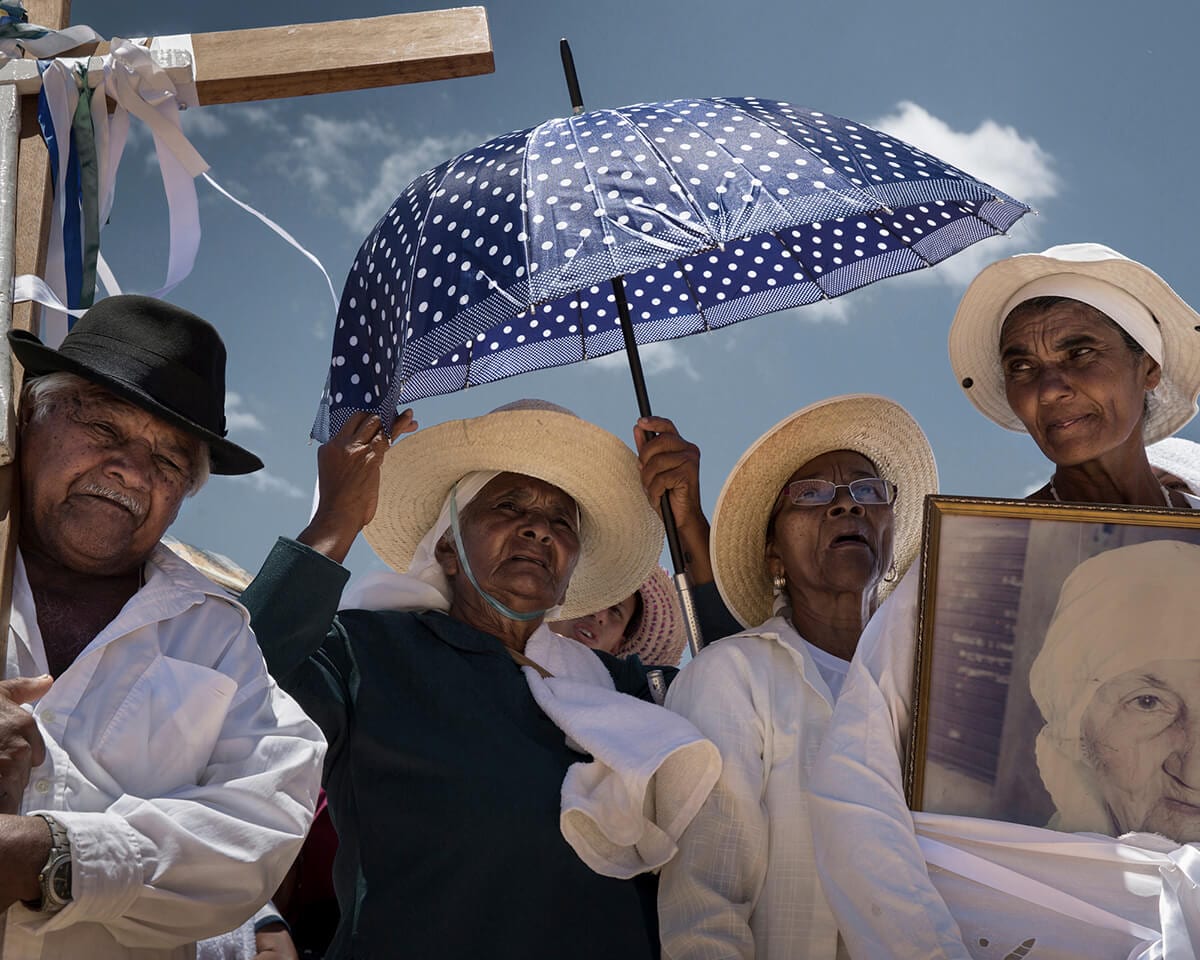
Felipe’s winning ‘Open Call’ image
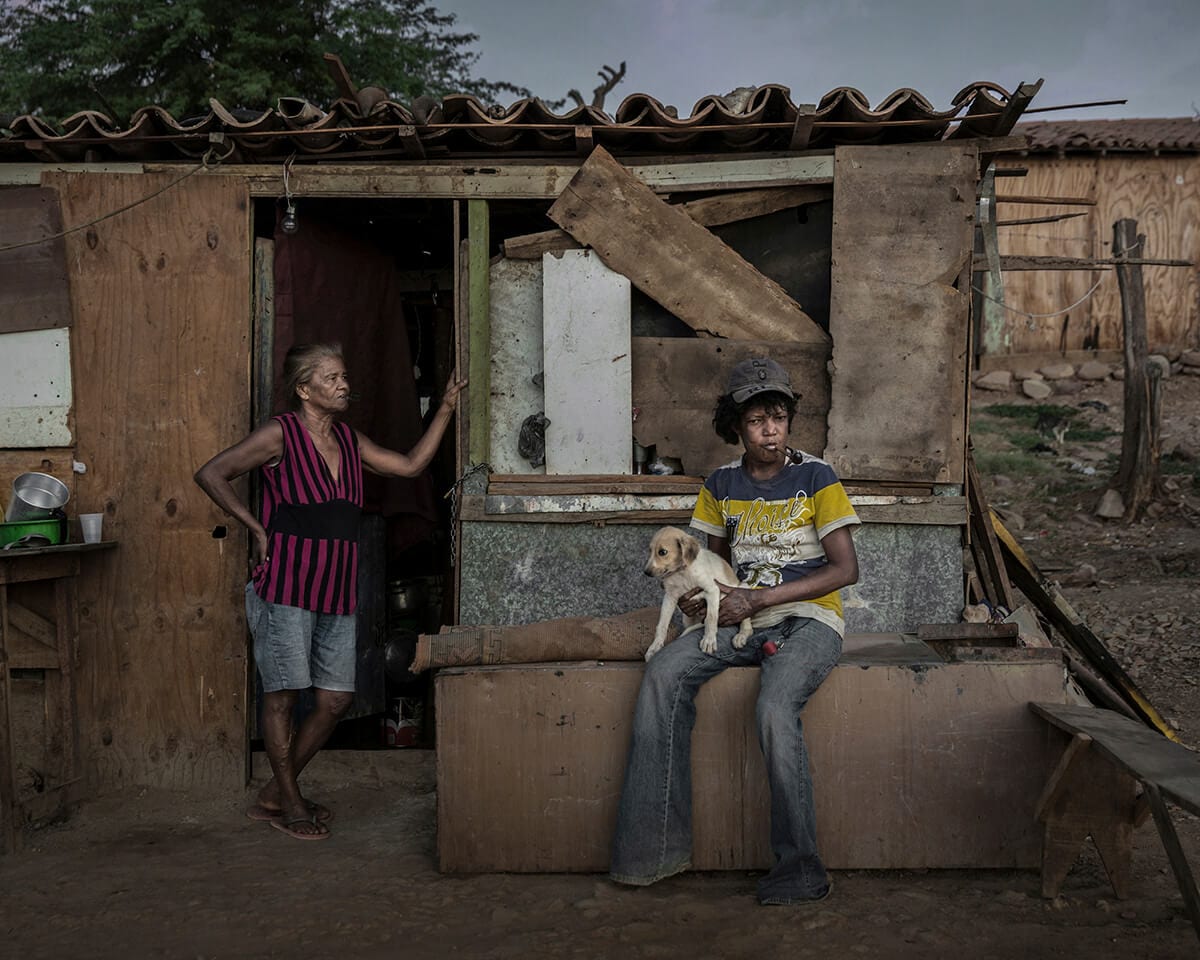
What emotions were you left with, having gotten to know these people? Is there an idea that you would like to get across beyond pure and objective documentary? I notice that several of your projects explore the symbiosis, or lack of it, between man and nature, and it seems that this relationship is particularly strong for the subjects of Backlands Sertão…
My intention was never to objectively document the reality of these people. In most of the images, I did not pursue a decisive moment, but rather encouraged a moment to emerge. It was first necessary to perceive people, space, time and light, then choose the best angle, and only then invite them into the narrative. It is a slow process because this approach requires great complicity with the character represented. The idea was to suggest something about that universe. It was a search for the emotion, not the truth.
There is always an emotional issue at the heart of my projects. The motivation to photograph comes from the desire to learn more about the subject. I have always had a strong interest in environmental and social issues, which are current in Brazil. The relationship between man and nature is present in practically all my projects in one way or another. In the case of Backlands Sertão, the sertanejo is almost like an extension of his environment. His survival is based on his ability to use what his natural environment has to offer. Leather, fiber and clay as well as the animals, are an essential part of his physical world. It is impossible to dissociate them.
Can you describe your winning image, and the circumstances that led to its creation? Do you resonate with Katerina’s comments?
I found this group by chance while wandering through a small dirt road. They were participating in a pilgrimage in honor of a local saint. They were willing to walk 16 km in the hot sun, which was a hard ordeal considering that most were elderly. Religiosity and messianic leadership mark the region’s past. This heritage is still very much present in traditional populations.
I think that the award-winning image differs from the other photographs in the essay. Unlike the other photos where I established a relationship with the environment and invited the elements into the narrative, this time I found an event already happening. I acted as a photojournalist. I knew what I wanted from that scene and waited for the moment when the elements interacted in the best way.
Katerina’s words made so much sense that I have been replicating them in my photography classes. Win Wenders once said “most of us have too much of everything and too much of everything means you get none. And the over flow of images today, means that, basically, we are unable to pay attention. We are unable to be touched by images.” In the current context of the excess and trivialization of the image, Katerina’s comments were inspiring. From a single frame, in addition to getting an accurate view of what happened, she raised a series of questions that go beyond what is printed on the image. Among the many questions that the image suggests, Katerina raised a very symbolic one to my work: “the singular figure clothed in black makes one wonder who she is”. This is the key question I intend to suggest when I make a portrait: who is this person?
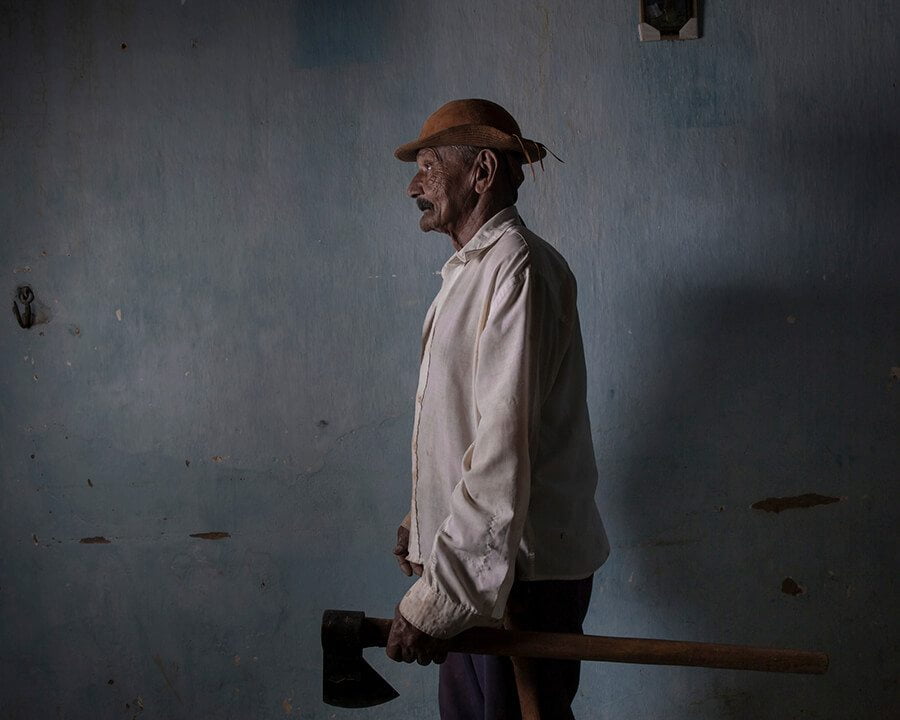
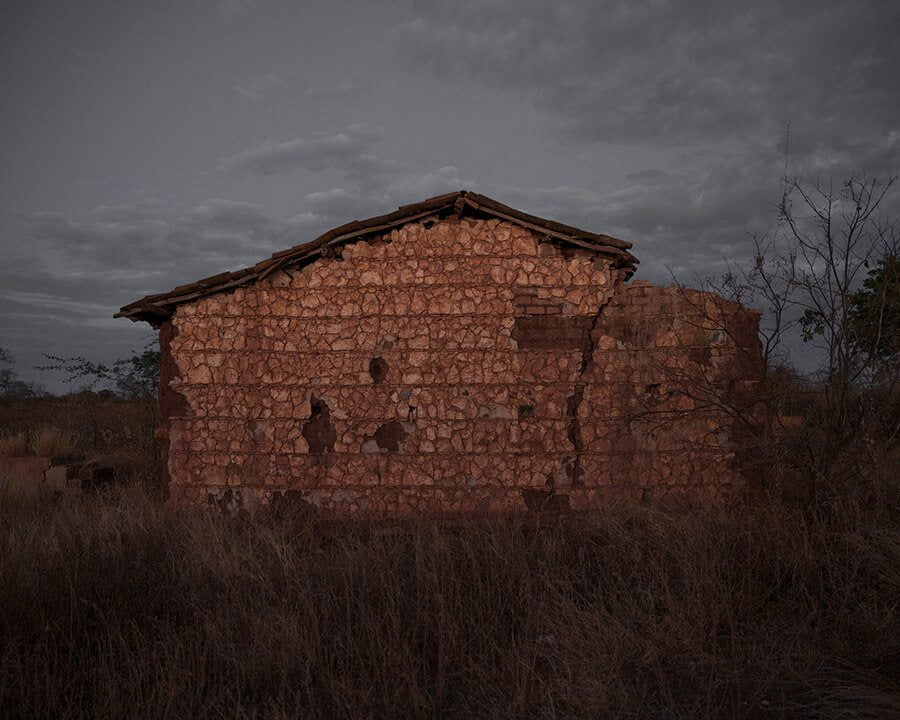
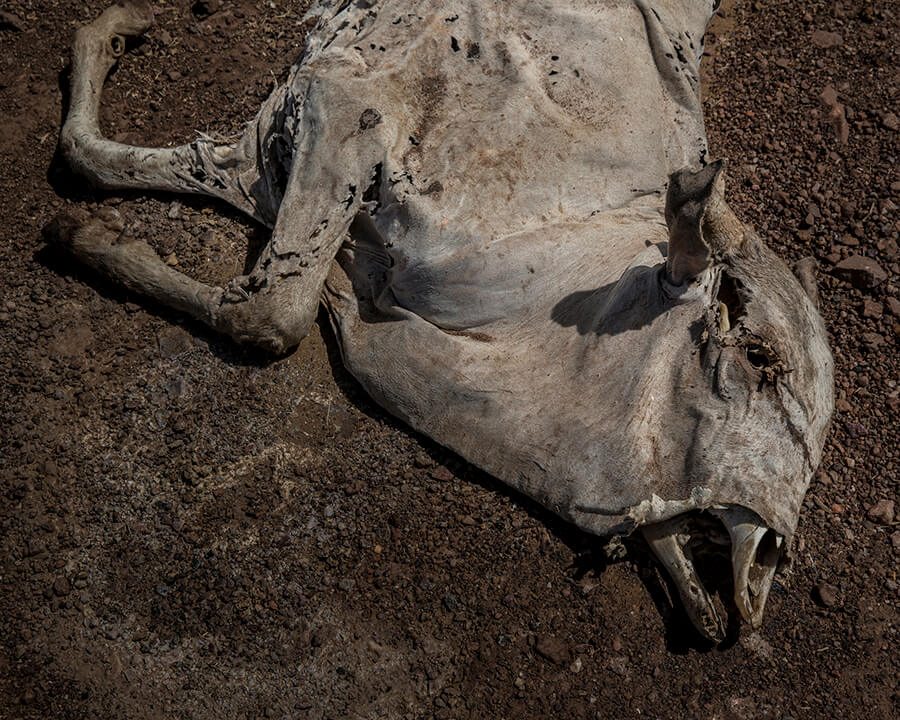
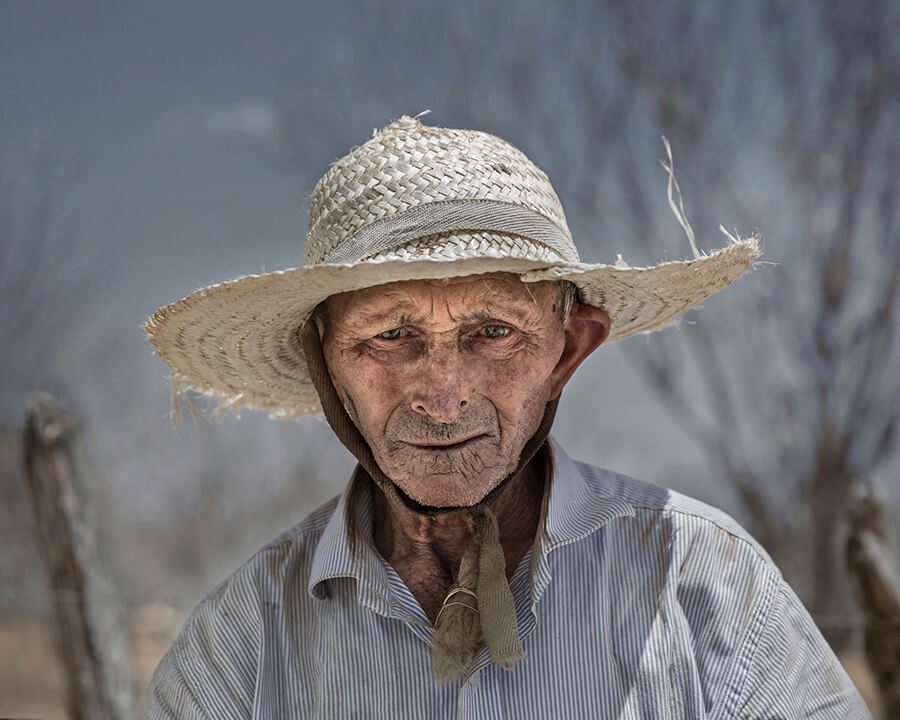
Absorbing the series, I’m struck by the arid, semi-desert environment as a metaphor for your story… plant life struggling to survive, in the same way your protagonists do. Buildings a little ramshackle and worn in the way that they are. These colors – browns, ochres and umbers – pervade your images and you choose to shoot in both full day light and in a dark half-light. Was this a conscious choice? What roles did night and day play in your work?
I sought to use light as a narrative instrument to create a dramatic mood in the essay. Even when photographing at noon, I looked for frames that softened the hard light. The predominance of many neutral colors helped in this process. I like to bring the night-time into my projects. The absence of natural light brings new possibilities for the narrative. It is possible to show the place in another way, in another perspective. For this essay, since many houses had no electricity, I needed to use artificial light in some photographs.
And similarly, I’ve noted that in your work you shoot exclusively in landscape composition. Again, is there a reasoning behind this?
So far, the landscape composition has shown to be the best way to compose my framing. In my latest projects I have chosen to centralize the main object and to fill the spaces with elements that help to tell the story.
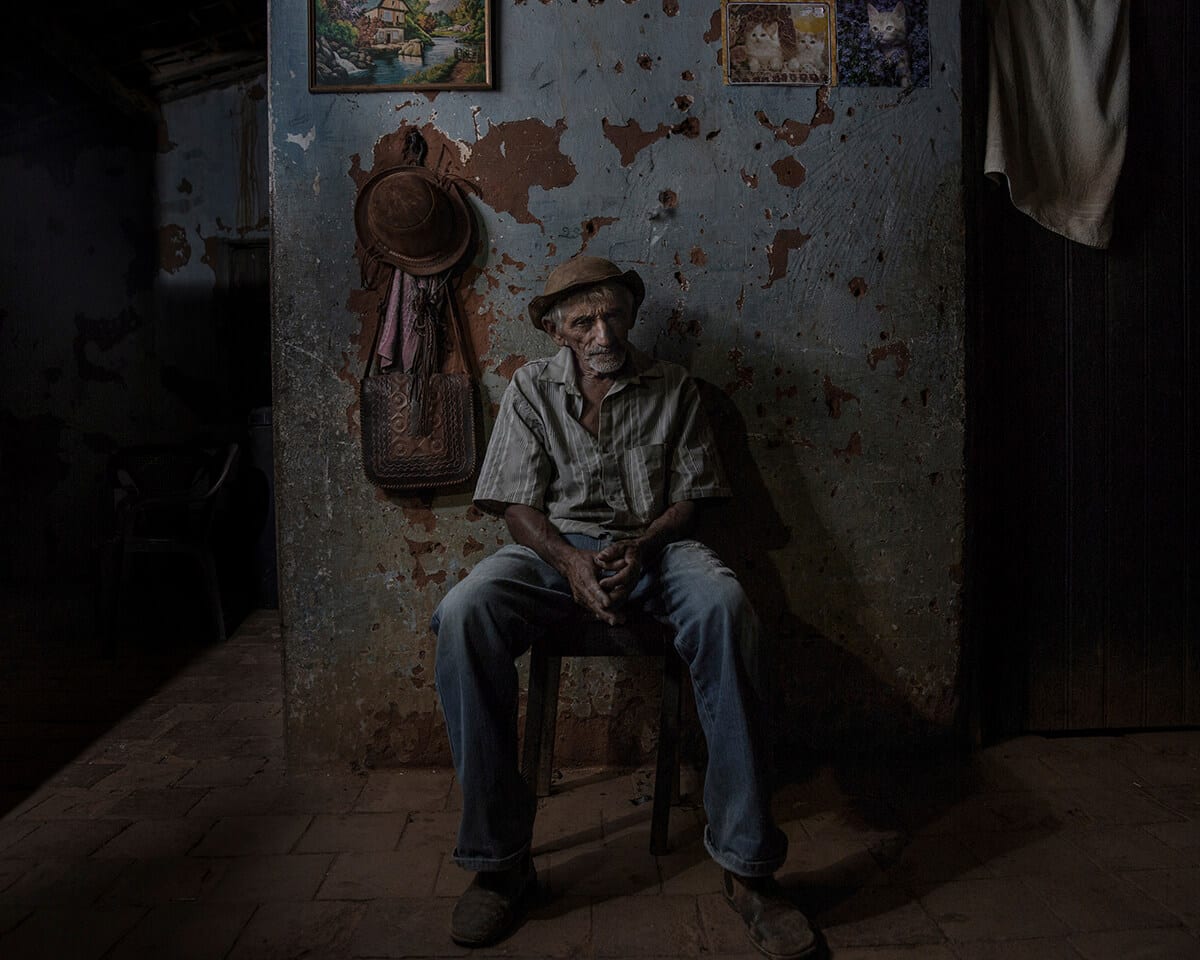
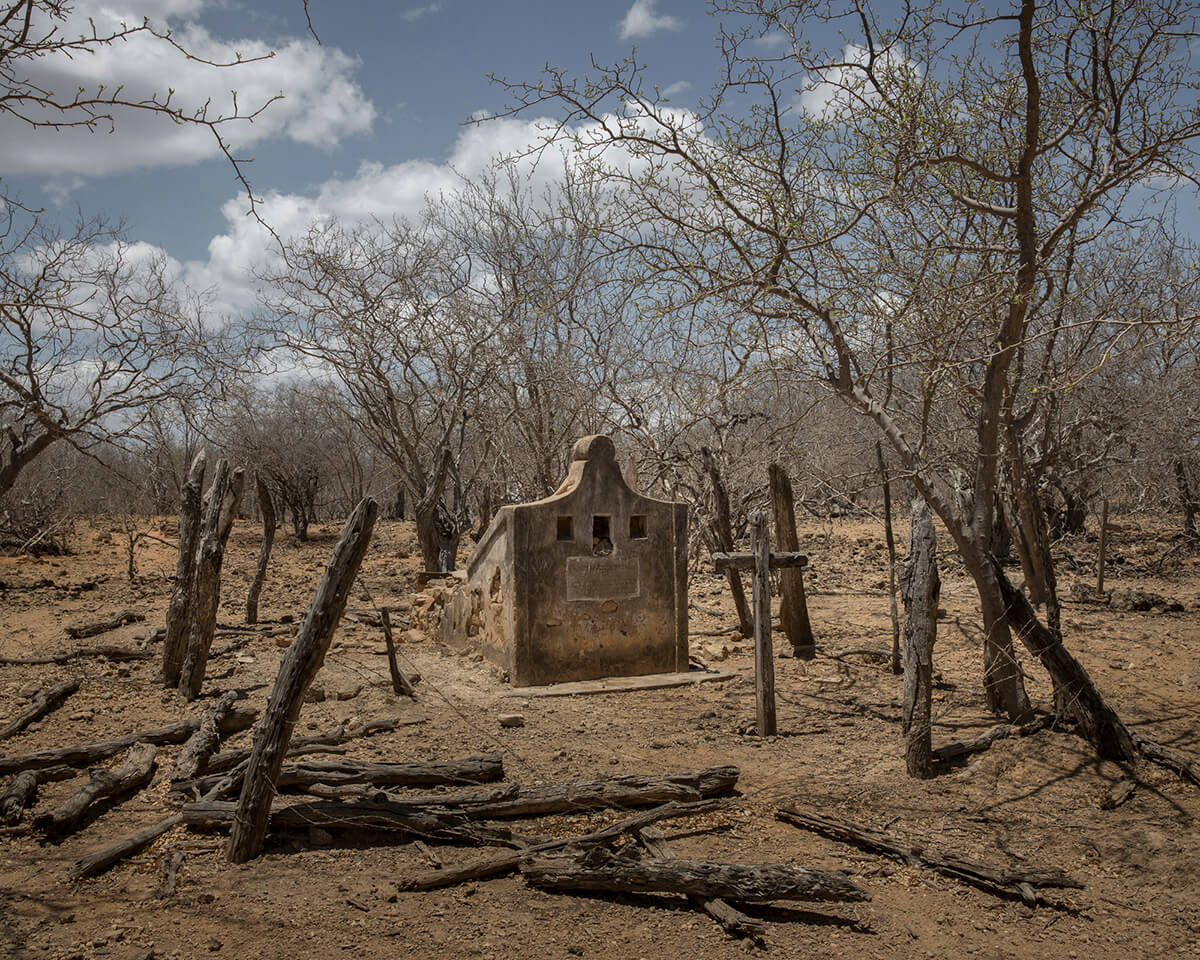
Alongside long-form documentary projects you collaborate with national and international newspapers and Magazines such as El País and Nat Geo, and have carried out commercial assignments in the fields of portraiture and architectural photography. How do you balance such a varied portfolio? Is your personal work where you can bring these disparate disciplines together?
We are in the middle of one of the greatest revolutions in human history. The communication revolution brought an incredible universe of new possibilities to photography but also many challenges, especially for photography professionals. My background is in documentary photography. Telling stories is my great passion, for which I dedicate my life. But it has been increasingly difficult to rely solely on journalism, financially and creatively, even though I’ve been collaborating for some of the main news publications. Just as we no longer want to pay to listen to music, we do not want to pay for the news either. Even if it turns to be an irreversible process, I believe that journalism is bigger than that and we will find a sustainable outlet. But meanwhile, commercial work has been the solution to fund my projects. One does not exist without the other.
Each segment of photography requires a specific idea and technique. The daily work in these different disciplines allows me to improve my technique and to better understand photography as a whole. I certainly bring valuable learning from fashion, advertising and architecture, such as lighting and composition, to my personal work.
And finally, where next Felipe? Will you visit the ‘sertanejos’ again? And is there another project that you’re currently working on, or a story you’re aching to tell?
I intend to continue with the projects I’ve been working on. I have chosen rather complex themes that require a lot of time to be approached in depth. For the Backlands Sertão project I intend to make a new incursion in the region next year and afterwards address the young people who migrated from there to the cities of the coast. I might make a book about it.
For more than three years I have been working on another project, Eustasia, about a city that is being swallowed by the sea and the human issues that present themselves in this universe. I am also starting a new essay that addresses the recent migration of Africans to Rio de Janeiro.
